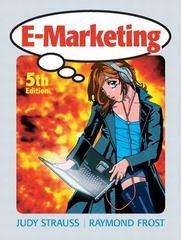Question
1.An Insulin company has a marginal cost of production equal to $14. The fixed cost of buying the rights (and factories) to produce the insulin
1.An Insulin company has a marginal cost of production equal to $14. The fixed cost of buying the rights (and factories) to produce the insulin $80. The demand curve for insulin is
D(P) = 96 - 4P
a.Derive the marginal benefit function (i.e. inverse demand function) for the monopolist.
MB(Q)=
b.If the monopolist wants to sell some arbitrary quantity Q, what price will the monopolist charge as a function of Q?
p^mon(Q)=
c.Complete the following two equations for total revenue and marginal revenue
i.TR(Q) =
ii.MR(Q)
d.Solve for the monopolist's profit maximizing quantity Q^mon and price P^mon ?
e.Calculate the social surplus maximizing quantity Q^opt .
f.Draw a graph with D(P), MC(Q) MR(Q), your answers to d and e, producer surplus, consumer surplus, deadweight loss, and labelling the axes.
g.Calculate the monopolist's profits (producer surplus - cost of production)?
h.Complete the following equation for average total cost and draw it on the graph. It doesn't have to be perfect but it needs to pass through ATC(Q^opt)and it should recognise whether or not the curve passes through MC(Q). :
ATC(Q)=
i.Someone suggests breaking up the monopoly on Insulin. Why might this be a bad idea?
j.If the government imposed a price ceiling equal to marginal cost what would the monopolist do?
k.Draw a line on the graph representing a price that would increase social surplus.
Step by Step Solution
There are 3 Steps involved in it
Step: 1

Get Instant Access to Expert-Tailored Solutions
See step-by-step solutions with expert insights and AI powered tools for academic success
Step: 2

Step: 3

Ace Your Homework with AI
Get the answers you need in no time with our AI-driven, step-by-step assistance
Get Started


